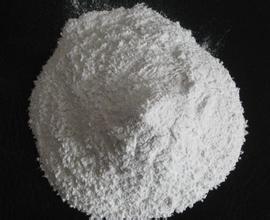Magnesium oxide is now a new application in the industrial field
Magnesium oxide flame retardant is colorless, non-toxic, odorless, non-corrosive and other properties, and is a green environmentally friendly polymer material additive. Magnesium oxide having a good flake or fibrous crystal shape can be better matched with raw materials without affecting physical properties such as strength of the raw material, and greatly improves the flexural strength and elongation of the polymer material. Therefore, magnesium oxide flame retardants with special morphology have more excellent properties and wider application.
Liaoning brucite is rich in resources, accounting for about two-fifths of the total domestic reserves. Brucite has a simple chemical composition and a low decomposition temperature. Magnesium sulphate is used as raw material to prepare magnesium hydroxide, which is rich in raw materials, has no pollution to the environment during processing, and consumes less energy. Therefore, it is of theoretical and practical significance to use Kuandian brucite as raw material to prepare ultrafine magnesium hydroxide with special morphology under hydrothermal conditions by using magnesium chloride method and magnesium oxide method respectively. The purity and crystallinity of the product were high by XRD. Scanning electron microscopy showed that the product was hexagonal flake or whisker, the crystal form was intact, the particle size was uniform, the particle size reached submicron, the whisker diameter was several tens of nanometers, and the length was 2-5 μm.
As an important chemical product, magnesia micro-nano materials have been widely used in ceramics, flame retardant, catalysis, medicine and environmental protection. The morphology, size and dispersibility of magnesium hydroxide micro/nano materials affect their application properties and therefore need to be regulated. In this paper, magnesium hydroxide was used as the research object, and the morphology, size and dispersibility of magnesium hydroxide products were successfully controlled by controlling the synthesis conditions. An aluminum-magnesium composite coating was prepared by plasma spraying technique using this magnesium hydroxide powder as a starting material.
A process for preparing magnesium hydroxide micro-nano powder material by ammonia diffusion method under a room temperature condition was designed. Under the guidance of S042-ion and additive PEG, magnesium hydroxide micro-nano particles can crystallize into spherical crystals with good morphology. The effects of reaction concentration, reaction time, solvent and additives on the final morphology of the globular product were investigated by different comparative experiments. By changing the type of additive, the average diameter of the globular crystals can be adjusted to suit the requirements of each specific application. Also using an ammonia gas diffusion system, by changing the kind of the magnesium salt reactant and the type of the additive, it is possible to obtain a magnesium hydroxide product different from the spherical morphology, that is, a flake magnesium hydroxide having good dispersibility.
The synthesized magnesium hydroxide product was used as raw material, and the aluminum-magnesium composite ceramic coating was prepared on the surface of the Q235 steel substrate by plasma spraying equipment by using the difference in melting point between magnesium hydroxide and magnesium oxide. The phase composition and microstructure of the composite coatings were characterized by X-ray diffraction analysis (XRD) and scanning electron microscopy (SEM). The aluminum-magnesium composite ceramic coating is mainly composed of a-A1203.γ-A1203 and MgO. Magnesium hydroxide is used in the field of composite coatings, which has better economic and social benefits and wider application prospects.







 wangwang
wangwang
